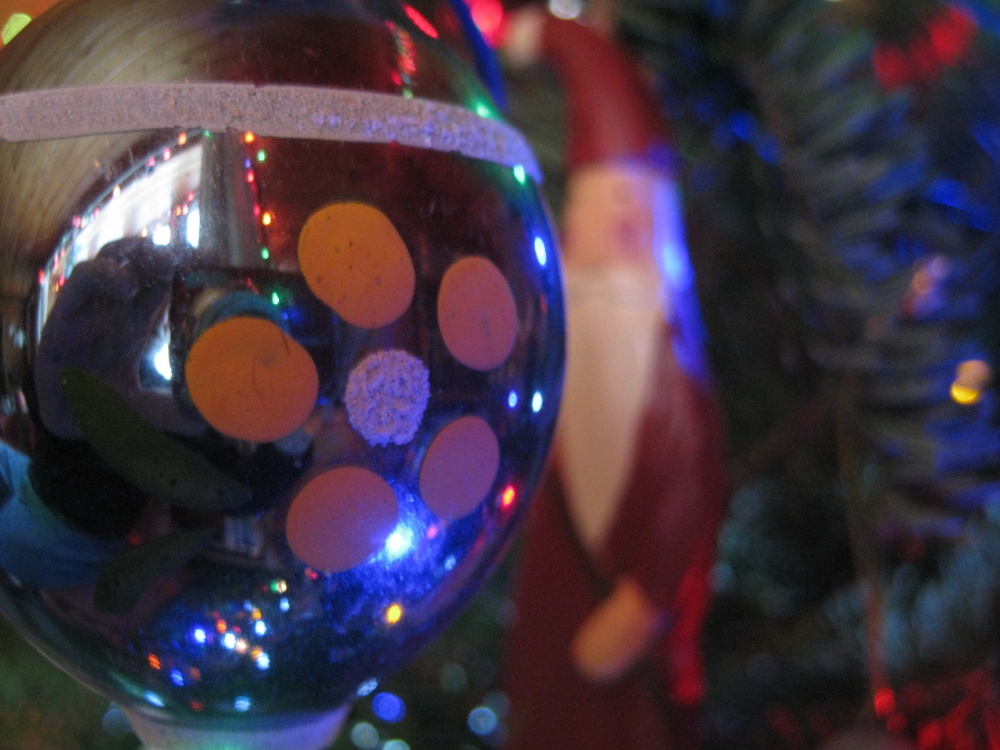Many Christmas celebrants are still enjoying their trees here the next day, Dec. 26, because really the fir tree, decorated with colored lights, glass balls, wicker and paper ornaments, and maybe a cranberry or popcorn string and some tinsel, is the central figure of present-day Christmas celebrations.
It’s interesting to recall that Christmas trees as we know them have not been around very long, in comparison to the roughly 2,000 years since Christ’s actual birth. Evergreens were used as symbols of renewal in winter solstice rituals long before Jesus was born.
The celebration of Christ’s birth in December (rather than in spring, the season scholars believe he actually was born) probably began sometime in the 300s A.D. to accord with the ancient rituals. By about 1100, when the church’s mighty grip controlled virtually every aspect of European life, Advent celebrations in northern Europe included a play in which a fir tree represented the Tree of Knowledge, and came to symbolize spiritual renewal through Christ.
About 400 years later, when Renaissance philosophers, scientists, explorers, artists and theologians were reinventing ideas of who and where we are, the first records of Christmas trees in homes appear. The National Christmas Tree Association says that the first known decorated Christmas tree was in Riga, Latvia, in 1510, and the tradition probably was under way in Germany about the same time.
One widely repeated legend depicts the German church reformer Martin Luther walking home on a crisp December evening in the early 1500s and seeing stars twinkle through fir boughs. The beauty of it struck him, and so he cut down a tree, brought it into his house, and put candles on it to re-create the Christmas sky. According to several sources, by the 1530s the “Tannenbaum” was so widely used in Germany that trees were being sold in markets. In the 1600s and 1700s, a tradition of hanging fir tops from the ceiling and decorating them with fruits, nuts and paper was widespread in Germany and Austria.
By the 1700s, German glassblowers were making lightweight glass balls to replace the heavier decorations, and it’s thought that Germans brought the Christmas tree traditions with them to North America. The first U.S. lot for selling Christmas trees appeared in New York City in 1851, and Christmas tree lights apparently were being mass produced by the 1890s.
Until the later 20th century, most trees were cut wild. Robert Frost’s 1916 poem “Christmas Trees” depicts a stranger driving up to Vermont and offering to buy all the full-boughed, saleable firs on a property owner’s land. In “the trial by market everything must come to,” the owner figures it works out to about 3 cents a tree for him and 97 cents a tree for the stranger. Thinking that for just 3 cents less he could give them away, he declines the deal.
The National Christmas Tree Association says about 25 million to 30 million real Christmas trees are sold each year in the U.S. Scotch pine, Douglas fir, Fraser fir, and blue spruce are popularly used in the U.S., and University of Maine Cooperative Extension recommends the balsam fir.
Any way you cut it, the season is cheered by the scents and colors of this deep-rooted tradition. Though it’s a day late, I echo the spirit of Robert Frost: “Too bad I couldn’t lay one in a letter” and send it off. Anyway, Merry Christmas.
Dana Wilde lives in Troy. His writings on the Maine woods are collected in “The Other End of the Driveway,” available from Booklocker.com and online book sellers. Backyard Naturalist appears the second and fourth Thursdays each month. You can contact him at naturalist@dwildepress.net.
Send questions/comments to the editors.



